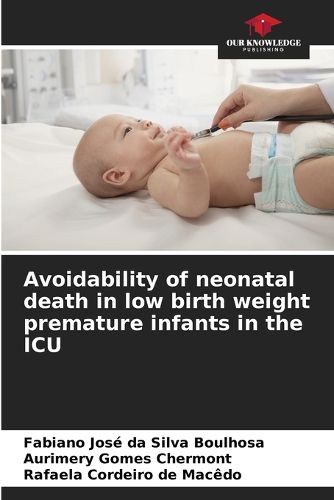Readings Newsletter
Become a Readings Member to make your shopping experience even easier.
Sign in or sign up for free!
You’re not far away from qualifying for FREE standard shipping within Australia
You’ve qualified for FREE standard shipping within Australia
The cart is loading…






This title is printed to order. This book may have been self-published. If so, we cannot guarantee the quality of the content. In the main most books will have gone through the editing process however some may not. We therefore suggest that you be aware of this before ordering this book. If in doubt check either the author or publisher’s details as we are unable to accept any returns unless they are faulty. Please contact us if you have any questions.
Analysing neonatal intensive care units, low birth weight is an important cause of morbidity and mortality. Researchers point out that knowledge of the population treated in hospital services can subsidise health care actions, meeting their needs and planning efficient care. Methodology An analytical, comparative and retrospective study of the profile of NBs under/equal to 1,500g admitted to the ICUs of a teaching hospital in the northern region of Portugal. Discharge/death outcome factors were subjected to multivariate analysis. The lower the NB's weight, the greater the chances of death due to various complications. In other words, the lower the weight, the more medication resources were used. However, despite the data, there was no increase in the length of stay in the units and/or a reduction in the mortality rate. In this context, we can see the fragility of health services in relation to the care of low birth weight neonates in ICUs and the need to apply new routines and continuing education, so that neonates can have a longer survival with better results.
$9.00 standard shipping within Australia
FREE standard shipping within Australia for orders over $100.00
Express & International shipping calculated at checkout
This title is printed to order. This book may have been self-published. If so, we cannot guarantee the quality of the content. In the main most books will have gone through the editing process however some may not. We therefore suggest that you be aware of this before ordering this book. If in doubt check either the author or publisher’s details as we are unable to accept any returns unless they are faulty. Please contact us if you have any questions.
Analysing neonatal intensive care units, low birth weight is an important cause of morbidity and mortality. Researchers point out that knowledge of the population treated in hospital services can subsidise health care actions, meeting their needs and planning efficient care. Methodology An analytical, comparative and retrospective study of the profile of NBs under/equal to 1,500g admitted to the ICUs of a teaching hospital in the northern region of Portugal. Discharge/death outcome factors were subjected to multivariate analysis. The lower the NB's weight, the greater the chances of death due to various complications. In other words, the lower the weight, the more medication resources were used. However, despite the data, there was no increase in the length of stay in the units and/or a reduction in the mortality rate. In this context, we can see the fragility of health services in relation to the care of low birth weight neonates in ICUs and the need to apply new routines and continuing education, so that neonates can have a longer survival with better results.